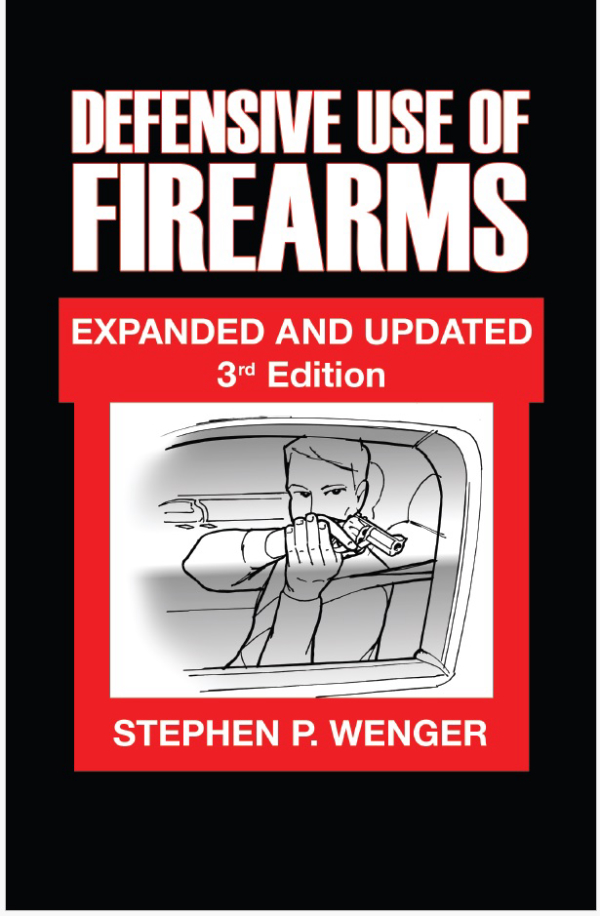Editor’s Note: This excerpt is from Defensive Use of Firearms 3rd Edition, by Stephen Wenger and appears with his permission. His Defensive Use of Firearms book in previous editions is what I consider the outstanding basic defense firearms primer, ideal for beginning shooters and helpful to the experienced. It’s highly recommended.

MENTAL AWARENESS
Therefore the skillful leader subdues the enemy’s troops without any fighting . . . Sun Tzu, The Art of War
Many defensive firearms instructors teach some version of a color code of awareness. In this code, condition white represents a lack of awareness. We are an automobile-oriented society. In an automobile, condition white is represented by the driver who is so engrossed in the song on the radio, the conversation with his passenger, or his plans for the weekend that he is unaware of the threats posed by other vehicles or other potential hazards on the road - or of the threat he poses when he makes lane changes without checking whether his path is clear to do so.
Condition yellow is usually described as some manner of relaxed awareness. Again, using an automotive analogy, a defensive driver is in condition yellow, aware of the movements of other vehicles on the road, balls rolling into the street that may signal a child to follow, the sounds of sirens or horns, or the elderly person about to enter the crosswalk.
Frankly, I never grasped the value of labeling as orange and red conditions of awareness but, when you reach the next section, you will see how they were actually intended by Jeff Cooper, who created the original color code as a training aid.
Some people may have learned everything they need to know in kindergarten, but I learned something very valuable in my high school defensive driving course: the five keys of the Smith System of defensive driving. About 80 percent of the information that most of us receive comes through our eyes, and four of the five Smith keys are useful to maintain awareness of our environment and what is happening in it:
1. Aim high in steering. For the driver this means looking more than one block ahead to anticipate potential problems. When you are on foot this means looking up, not at your feet. Not only does this minimize the likelihood of walking into a situation you may not be able to handle, it also communicates nonverbally that you are aware and not a victim of choice.
2. Keep your eyes moving. For the driver this means continually sweeping not only the road ahead but also the rear- and side-view mirrors. When you are on foot this means scanning such places as alleys and doorways and such sources of reflection as store windows, and avoiding tunnel vision in general.
3. Get the big picture. For the driver this means assembling visual (and auditory) input to anticipate potential hazards. When you are on foot, this means recognizing that such items as ski masks aren’t normal attire in warm weather or making sure that someone demanding your attention doesn’t distract you from seeing his partner approach from a different angle.
4. Leave yourself an out. For the driver this means things such as not getting boxed in between three or four vehicles, leaving no options if the one in front should stop suddenly or one on the side should swerve into your lane. When you are on foot, this means things such as not automatically going for the one restaurant seat with your back against the wall if it denies you an avenue of escape, as well as knowing where you will dodge or duck for cover if you need it.
5. Make sure they see you. For the driver this is a precaution to minimize careless action by other drivers.
When you are on foot this may be a liability - you may frequently benefit by getting through potential trouble spots unobserved.
A very important part of mental awareness is learning to listen to our gut feelings. Gut feelings actually have nothing to do with our guts; they have to do with experience and pattern recognition. They are actually a subconscious form of prejudice, in the broader sense of having prejudged, rather than in the narrow, contemporary sense of negative bias. Prejudice is a form of learning; the challenge is to distinguish whether it is functioning in a positive or a negative manner so that we ensure that it doesn’t work against us. Thus, if we assume that all people of a certain ethnic origin are bad, we may prejudge unfairly and possibly cause harm to another, deny ourselves a valuable friendship, or take inappropriate action that could come back to haunt us. However, if we notice a group of shabbily dressed men clustered near the entrance of a liquor store in our path, we do no harm by choosing a different route to walk and may well avoid trouble. The caveat is that we do no harm if our gut feeling or prejudgment leads us to change our route or take some unseen measure of preparation. If it leads us to draw a gun prematurely, it may land us in jail.
The best way to win a fight is to avoid it. Barring that, the next best thing is to know that it is coming and to make the other guy fight on our terms.
— Stephen Wenger. His book, Defensive Use of Firearms 3rd Edition is now available in PDF for downloading at Snub Gun Study Group.